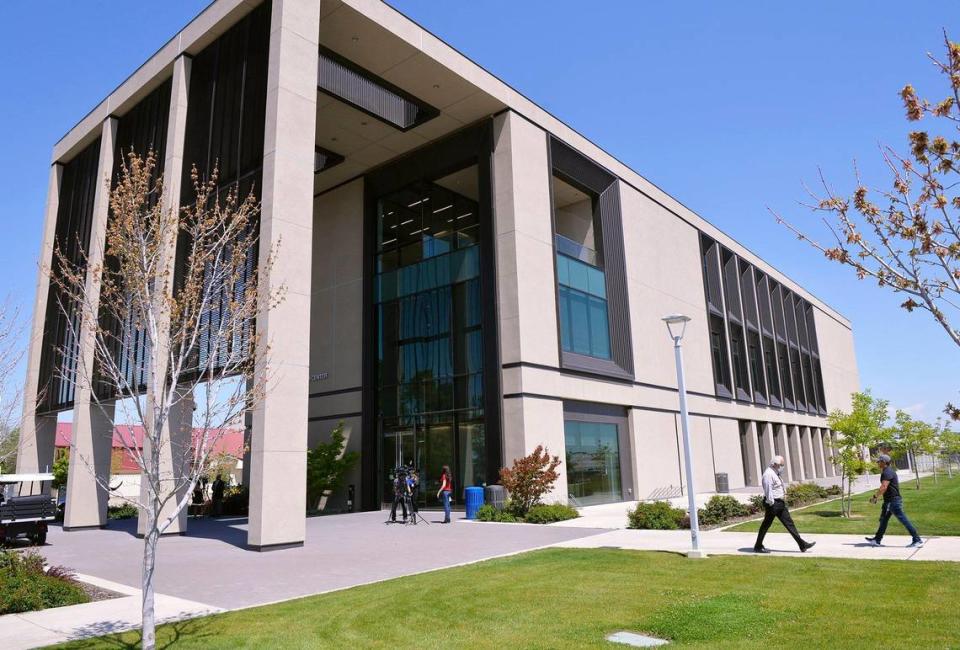‘New-and-improved’ Fresno State tax initiative needs support of Republican voters | Opinion
If proponents of the new and improved Fresno State tax initiative wish to avoid another defeat at the ballot box, they don’t necessarily need to convince me.
Though that might help.
They’ll need to convince northeast Fresno voters with registered addresses north of Bullard Avenue. They’ll need to sway central and northwest Fresno voters who live west of Maroa Avenue and east of the BNSF Railway tracks. They’ll need to persuade Clovis voters, and those in unincorporated areas.
Why? Because those are the precincts that voted “No” — overwhelmingly in many neighborhoods — on Measure E in the November election, according to county voting data. Part of the 52.86% majority that sent the initiative to defeat.
Meanwhile, nearly every Fresno precinct located south of Shaw Avenue (excluding county islands) voted “Yes.”
Opinion
To observers of local politics, this all falls within the expected norms. Although Fresno fades from blue to red the farther north you go, Democrats held a 16.5% citywide registration edge in the last election. Clovis and the foothill communities, meanwhile, remain Republican strongholds.
The takeaway is simple: In order to attain the required majority, more Republicans and conservative-leaning independents in north Fresno, Clovis and unincorporated areas must vote to tax themselves. Something that goes against their very nature.
That’s the challenge facing backers of Measure E The Redux, who Tuesday rolled out two of their political big guns — Fresno Mayor Jerry Dyer and California Assemblyman Jim Patterson — to talk up the initiative during a kickoff press conference at Harris Construction.
The reworked measure would levy a 1-cent sales tax on every $4 purchase in Fresno County for 25 years. (Last time it was 1 cent for every $5 purchase.) It is expected to generate $1.6 billion for Fresno State facilities improvements.
Backers of the proposed tax submitted 34,395 signatures to the Fresno County clerk for review, according to campaign consultant Tim Orman. The measure is expected to go before the Fresno County Board of Supervisors in October and placed on the March 2024 ballot as Measure E, Orman said.
“I’ve got to convince a lot of my Republican friends to support it, but I think a lot of those attitudes have changed,” said Orman, former chief of staff to Dyer and Lee Brand.
Superior to failed measure
My earlier use of “new-and-improved” was intentional. This version of the tax initiative is superior to the one voters rejected last fall, for several reasons that need a little room to explain.
Has it improved enough to sway my opinion? I’m not all the way there yet, but the election isn’t for six months.
A primary weakness of the previous measure was its vagueness. Beyond the premise of “two-thirds for academics and no more than one-third for athletics,” voters weren’t given any specificity about where their dollars would be spent.
This time, there’s an itemized list of projects and funding priorities: $433.8 million for academic buildings, including new nursing and engineering schools as well as a 1,200-seat concert hall; $360.4 million for the renewal and improvements to existing facilities; and $240 million for athletics projects.

Something that jumped out right away: The cut for Bulldogs sports has been slashed from 33% to 15%.
While the new Measure E does allocate $160 million for the modernization of aging Valley Children’s Stadium – something the university is trying to do on its own but would gladly accept help – an equal amount of money is set aside for affordable student housing and parking.
Credit the authors with smart allocating. No matter how badly Fresno State needs to fix its football stadium, that should never be the public funding priority over academic facilities and student housing.
The proposed initiative also creates $150 million in endowments — $50 million apiece for scholarships, maintenance and matching funds for future capital campaigns — that can’t be touched until the 25 years have expired.
That’s smart thinking, too. In 2050, there’s no telling what Fresno State’s needs might be.
“The biggest problem with the last one was that it was amorphous in that it wasn’t defined,” Orman said. “There was nothing that really showed any details. That’s something we really tried to address.”
Blurring the bad optics
Meanwhile, some of the bad optics surrounding the first initiative, which was bankrolled by developer and construction company owner Richard Spencer, have been blurred.
When the owner of Harris Construction puts up nearly $1.5 million of his own money to fund a tax measure that would create a building boom at a state university, eyebrows are bound to get raised. (And if they aren’t, shame on them.)
This time, the list of financial contributors is more varied. As of June 30, the latest campaign filing submitted to the Fresno County clerk, backers had raised $567,500. None of that money came from Spencer, though Orman indicated that will change in future disclosure reports.
The basic argument against Measure E is that taxpayers shouldn’t be asked to shoulder the burden of a public university that already receives state funds. And that new sales taxes have the heaviest impact on those who can least afford to pay them.
Isn’t it funny, though, how people in Fresno’s least affluent neighborhoods were willing to tax themselves for the benefit of the region’s largest university while those in its most affluent were not?
For Measure E to avoid going belly up a second time, that ratio has to change.


